Ever found yourself in the meat aisle surrounded by a million cuts of beef, thinking, what the heck am I going to prepare for dinner?
As if your day was not hard enough, now you have just spent twenty minutes in the beef section staring, hoping that the answer to your dinner problems will magically appear in front of you.
Surrounded by so many cuts of meat picking one piece of beef for dinner can seem like an impossible task.
Luckily this beef guide provides you with all of the information you need to make your grocery store runs a little easier.
Now you will be able to run in and out of the meat section with no problems!
Contents
What Is the Difference Between Primal and Subprimal Cuts?
Knowing the difference between primal and subprimal cuts is essential to understanding cuts of beef.
Primal cuts of beef are the initial cuts of beef that are cut from the carcass. Primal cuts of beef are further broken down into subprimal cuts.
There are eight primal cuts of beef which include: the shank, brisket, rib, short plate, flank, round, chuck, and loin.
In contrast, there are more than 100 subprimal cuts of beef, a few of which include both top and bottom blades, the neck, and the shoulder.
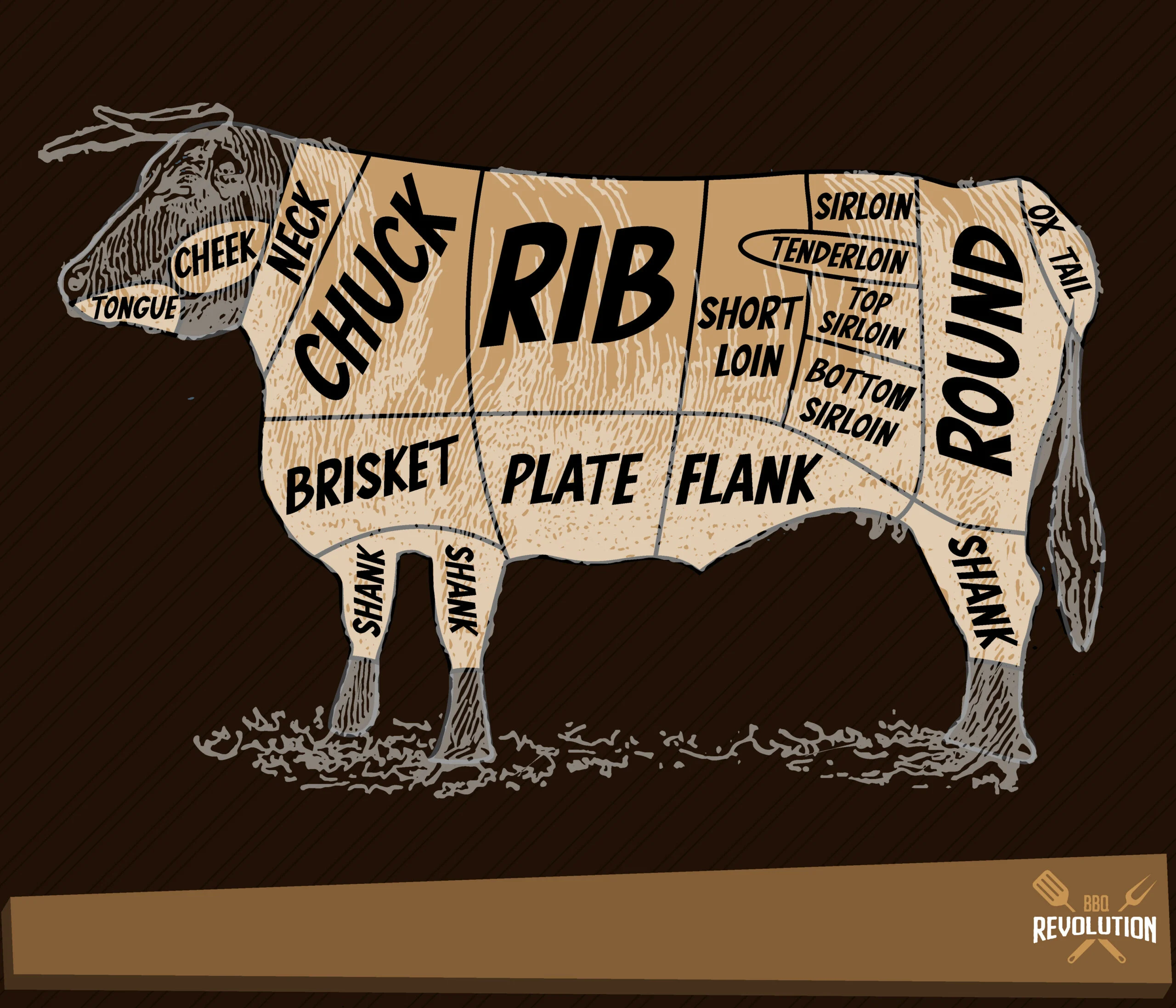
Beef Cuts Explained
Shank
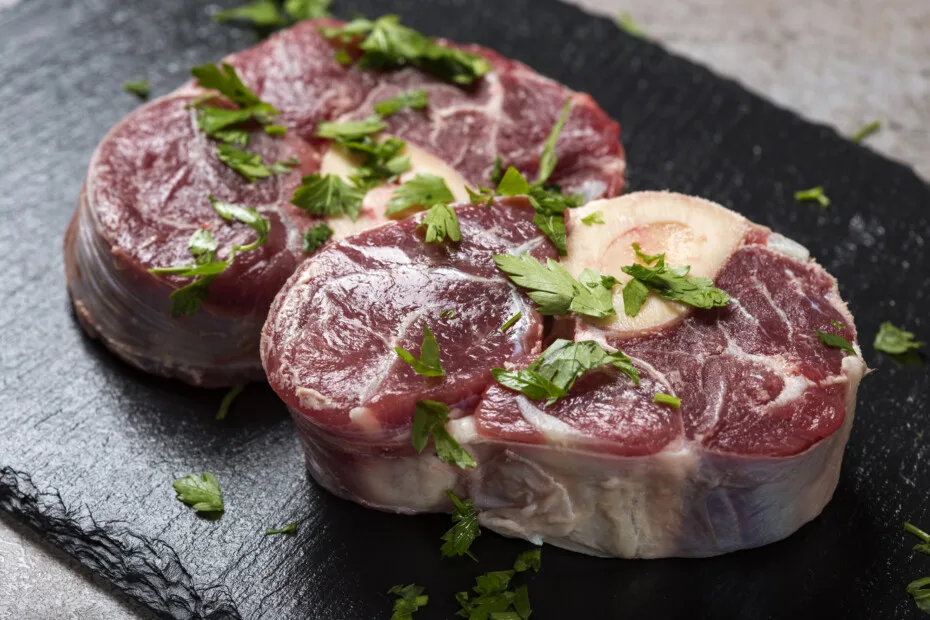
Location: Beef shanks are located on the tibia leg of the animal, right above the knee or hock.
Corresponding Subprimal Cuts Of Beef: Beef shanks are fabricated into the shin or the foreshank and the leg or the hindshank.
Fat Content: Shanks are a lean cut of meat with little to no marbling, making it tough. This beef cut contains approximately 6 grams of fat and is often used to produce low-fat ground beef.
What Does Beef Shank Look Like? Beef shanks are cut horizontally into portions of meat that is usually 1-inch in thickness.
For this reason, beef shanks can be called shank steaks since they resemble a steak that has a round leg bone in each piece.
How Long Does Beef Shank Take To Cook? The cow uses the muscles in this portion of the body constantly.
It uses its legs to walk around, which means this cut is guaranteed to be tough, dry, and chewy. When it comes to beef shanks, low and slow cooking methods are the only option.
Be prepared to cook your shanks for a minimum of 4-6 hours if you are not using a pressure cooker. Beef shanks can be cooked in a pressure cooker in as little as 45 minutes. Luckily you can place your beef shanks on the stove and go about your day you normally would.
Best Cooking Methods: To convert this tough cut of meat into atender, flavorful meal, it needs to be prepared in a pressure cooker, instant pot, crockpot, or in a Dutch oven on the stovetop or oven using low temperatures for an extended amount of time.
Ideal Dishes: Shanks are best used in dishes such as beef stews, osso bucco, beef bourguignon, soups, and beef stock.
Cost Of Beef Shank: Beef shanks are an underrated cut of meat. In fact, it’s not a popular cut of beef.
Because of a shortage in sales, beef shanks usually can’t be found in stores. Nevertheless, it is very inexpensive when it’s found on the market and usually runs for $3-$4 per pound.
Just remember to factor in a pound per person when choosing your beef shanks because they will definitely disappear the minute you place them onto your dinner table.
Best Substitutes For Beef Shanks: Although nothing can compare to the tender texture of a slow-cooked beef shank, a chuck roast, silverside, skirt, beef arms, oxtails are the perfect substitute to use in any beef shank recipe as these meats have a similar texture to the shank.
Wine Pairings: Beef shanks are compatible with both white and red wines. If you prefer white wines, Californian wines such as Zinfandel, Pinot Noir, and Chardonnay, or a German Riesling is your best option.
However, if you are a red wine enthusiast, select an Argentinian Malbec, Brunello, or Barolo.
Brisket

Location: Two briskets are sliced from the lower chest portion of the beef carcass.
Corresponding Subprimal Cuts Of Beef: The primal cut is fabricated into two subprimal cuts of brisket: brisket point and brisket plate.
Fat Content: The fat content of brisket differs depending on the cut of meat. The brisket plate, more commonly known as the flat, is the leaner cut of the brisket.
As a result, the cap of fat is trimmed, leaving the meat with as little as two grams of fat per every four ounces.
On the other hand, the brisket plate contains about 17 grams of fat. The brisket plate is made up of intramuscular fibers called marbling that melts when cooked.
What Does Brisket Look Like? The size and shape of brisket can vary. It depends on the butcher.
Often you will find small briskets, usually 3-5 pounds in weight, with most of the fat removed, encased in cellophane wrap.
How Long Does Brisket Take To Cook? Since brisket is not the most tender part of the animal, it’s best to adjust your cooking time to 30 minutes to an hour per pound.
For example, a 3-4 pound brisket would take 4 1/2–6 hours, while an8-10 pound brisket would take 12–15 hours.
Best Cooking Methods: Smoking is the ultimate cooking method for brisket. The slow and steady ascent of heat and wood smoke infuses the meat to tenderize the tough, threadlike fibers while disintegrating firm connective membranes and locking in the signature beefy flavor.
Additionally, you can bake it in the oven with beef broth and water. Seal the brisket with foil and bake it for 3-4 hours 300°F until its fork-tender.
Another suitable cooking method is cooking it in the slow cooker.
Ideal Dishes: Brisket is mostly used for BBQ dishes such as slow cooker BBQ beef brisket or smoked beef brisket.
However, brisket is best used in dishes such as baked beef brisket and braised beef brisket.
Cost Of Brisket: Untrimmed beef brisket tends to be less expensive since it requires less processing.
On the contrary trimmed beef brisket can cost a pretty penny depending on your region, season, and market. Prime grade brisket costs about $2.99-$6.99 a pound.
Brisket loses approximately 40% of its mass during the cooking process, explaining why trimmed brisket can be expensive.
Best Substitutes For Brisket: If you cannot find brisket, you can substitute a chuck roast or short rib in its place.
You can even use a pork roast, lamb roast, roast leg or shoulder, and poultry thighs such as chicken, duck, goose, or turkey.
Wine Pairings: Brisket pairs well with fruity wine that have a decreased tannin content.
Pinot Noir complements brisket perfectly because of its refreshing acidity. However, a Cabernet Sauvignon or a Merlot works just as well.
Ribs
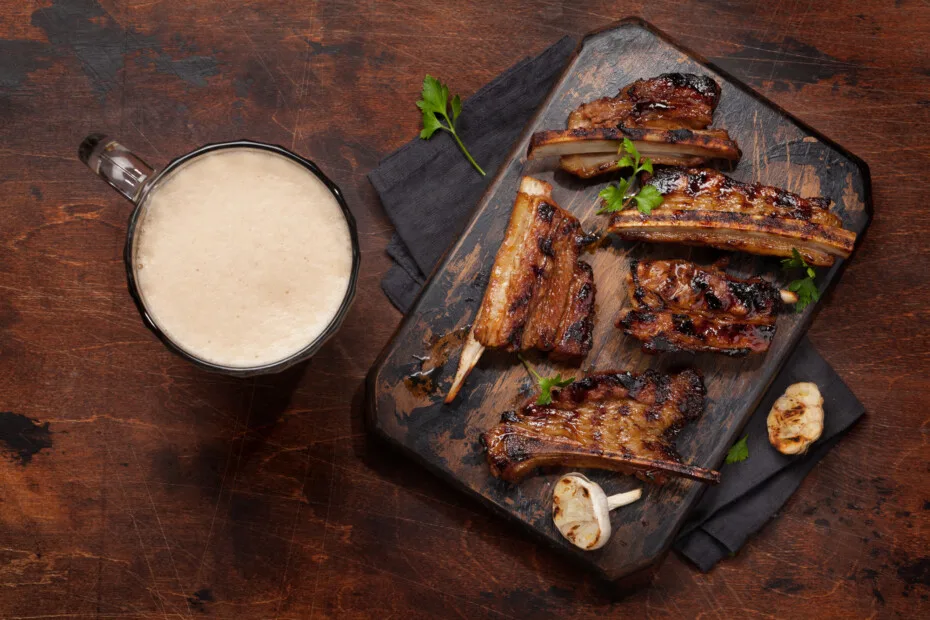
Location: The ribs are cut from the center back region of the cow, between the chuck and the loin.
Corresponding Subprimal Cuts Of Beef: Subprimal cuts of ribs include the short ribs, back ribs, ribeye steak, and prime rib.
Fat Content: The fat content of short ribs depends upon the cut of meat. Short ribs contain 42 grams of fat per 3-ounce serving, while prime rib has 24.8 grams of fat.
Back ribs contain 18 grams of fat per 4 ounces, and ribeye steaks have 22 grams of fat.
What Do Ribs Look Like? Short ribs, also called plate short ribs are short, meaty, and usually commercially sold in 3 bone-in sections. Back ribs contain more marbling than pork ribs and are larger than baby back ribs.
Ribeye steaks typically have white specks of marbling running throughout the meat.
Prime rib, commonly known as standing rib roast, has a large “eye” of meat in the center of the cut that is marbled with intramuscular fat, and a thick layer of fat encases it.
How Long Do Ribs Take To Cook? On average, back ribs can take about 3-6 hours to cook. Prime rib can be cooked in as little as 30 minutes or up to 3 hours. The cooking time of ribs depends on the size.
Always add 15 minutes for every pound to estimate cooking times. Short ribs take about 2-3 hours to cook, while a ribeye steak can take as little as 15 minutes.
Best Cooking Methods: Roasting works particularly well with prime rib, while braising is the perfect cooking method for short ribs. Back ribs can be slow-cooked, roasted, or grilled, and ribeye steaks can be pan-seared or grilled.
Ideal Dishes: Ideal dishes for the rib portion of the cow include herb-roasted prime rib, pan-fried ribeye, grilled rib eye, garlic red wine braised short ribs, and BBQ back ribs.
Cost Of Ribs: Short ribs can range from $25-$45 dollars with one package containing 5-7 ribs. Prime rib is considered a choice cut of meat, meaning it’s a bit more expensive.
Prime-grade prime rib costs around $17 a pound, while choice-grade prime rib is approximately $13 a pound.
Ribeye can range from $11.99-$14.99, while back ribs are $6.00-$7.00 a pound.
Best Substitutes For Ribs: The best substitute for short ribs or back ribs is a chuck roast.
However, while top loin, tri-tip, and the eye of round are great alternatives for prime rib. A flat iron, chuck-eye, or a tri-tip sirloin steak can be used in place of ribeye steaks.
Wine Pairings: Since prime rib has a rich flavor, younger wines such asBarbera or Cabernet wine are best, but it will also work with a full-bodied, robust wine such as a Merlot or Bordeaux.
Chilean Cabernet Sauvignon or a Tuscan Sangiovese pairs well with short ribs.
For back ribs, Cabernet Sauvignon, Grenache, Malbec, Shiraz, or Aged Nebbiolo will enhance the flavor of the ribs while the acidity and refreshing taste of a Zinfandel will complement a meaty rib-eye steak by cutting the fat.
Round
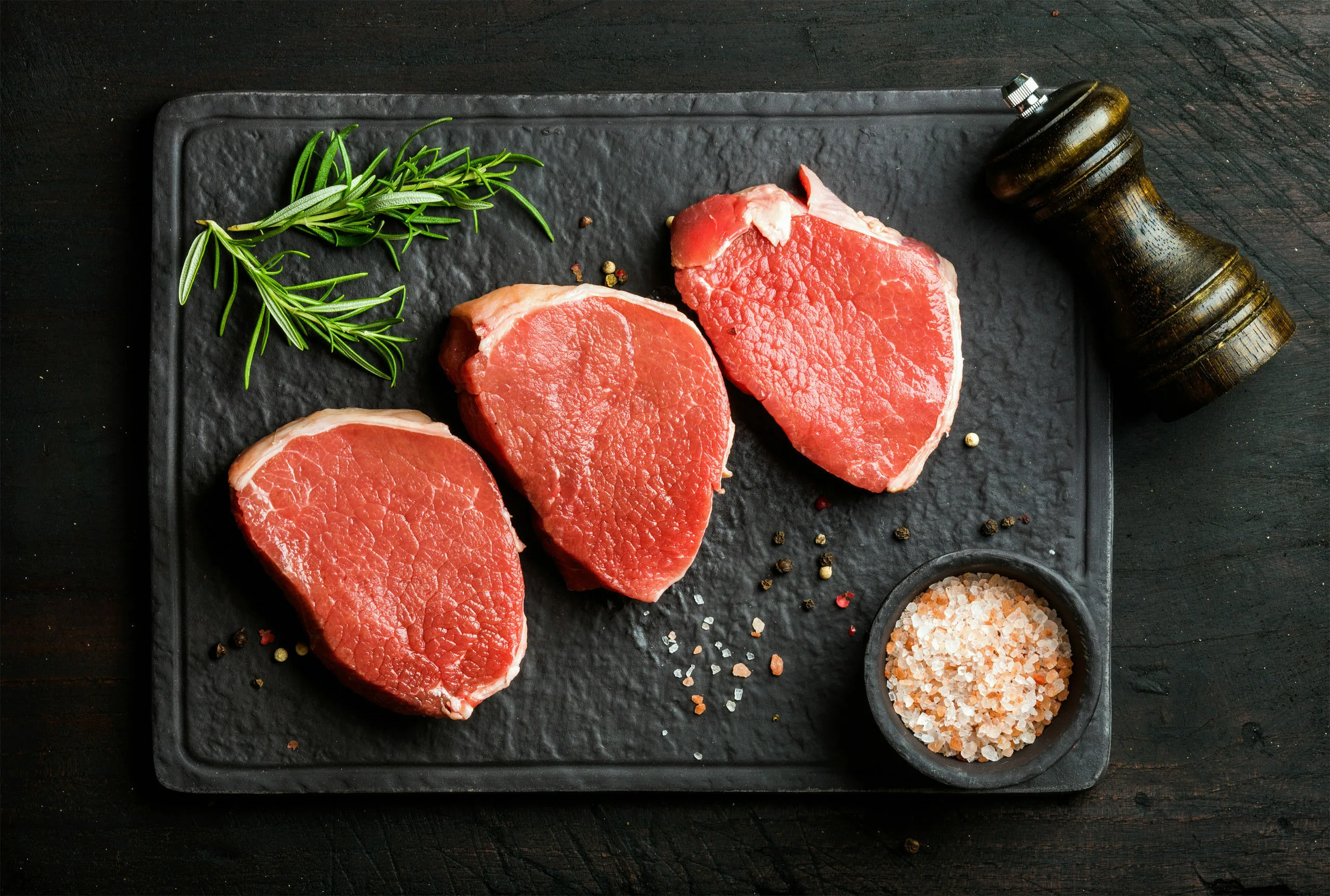
Location: The round is located in the region of the animal’s rear legand rump just above the shank.
Corresponding Subprimal Cuts Of Beef: The round cut of beef is fabricated into the eye of round, bottom round, and top round.
The top may or may not include a portion of the round bone or the knuckle, also known as the sirloin tip.
Fat Content: The round is considered to be a leaner cut of beef. In fact, the subprimal portions are comprised of fewer than 10 grams of fat.
What Does A Round Look Like? Round steaks are defined by the circular leg bone and three muscles running through the meat. A boneless round roast resembles a tenderloin; however, it is tougher than a tenderloin.
How Long Do Rounds Take To Cook? Since the round is a tougher cut of meat, it can take 1 hour- 2 hours until it becomes tender.
Best Cooking Methods: Low temperature and indirect heat are essential for cooking rounds.
Methods such as braising stewing that cook are cooked at low and slow in flavorful liquids such as beef or chicken broth.
Round steaks can also be grilled; however, they should be tenderized by pounding it, seasoned with coarse salt, or marinated in an acidic base before grilling.
Grilled round steaks should be cooked to medium-rare and sliced into thin strips against the grain to limit the tough and chewy nature of the meat.
If they are cooked to medium, medium well, orwell done, you run the risk of getting a tough, chewy steak rather than a tender round steak.
Ideal Dishes: Dishes such as Swiss steak, beef stroganoff, braised round steak, and roasted rump are ideal for beef round.
Cost Of Rounds: Since round is a tough cut of meat, it is pretty inexpensive compared to other beef cuts. Eye of round steak run about $9.99-$10.99 per pound. Bottom and top-round pricing is about $5.99.
Best Substitutes For Rounds: Whether it is top or bottom round, chuck roast is an excellent alternative.
However, chuck roast has a higher fat content than beef round. Suppose you want a leaner substitute top sirloin roast or shoulder clod.
Any steak cut of chuck or sirloin can be substituted for eye of round steak.
Wine Pairings: A barrel-aged Chardonnay, Bordeaux, Cabernet Sauvignon, or Merlot will work well with any cut of round.
Oxtails
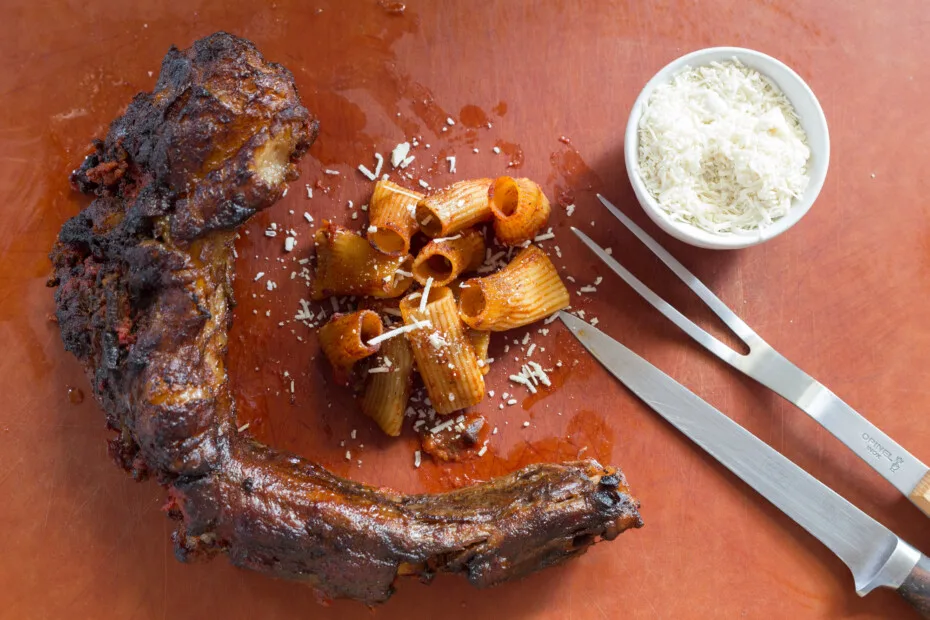
Location: The oxtail is just as it sounds: the tail of the cow. Oxtails were fabricated from the tail of an ox in the past. However, today, they are manufactured from both sexes.
Corresponding Subprimal Cuts Of Beef: Although there are no corresponding cuts of oxtail, the tail is decorticated, then cut into portions.
Each portion has marrow in the center, with a limited amount of meat surrounding the tail.
Fat Content: Oxtail Is a fatty cut of beef. Even though it has very little meat, it has 71 grams of fat.
What Does an Oxtail Look Like? Oxtails usually weigh about 7–8 pounds, with some pieces being meatier than others. However, oxtails consist of bone, cartilage, and connective tissues with minuscule amounts of meat.
How Long Do Oxtails Take To Cook? Oxtails are usually cooked for about 2-3 hours until the meat literally falls off the bone.
Best Cooking Methods: Oxtails are usually stewed, braised, or used in soups. As long as there is liquid included in your recipe and it’s cooked over low heat with the lid, it is a suitable method for cooking oxtails.
Ideal Dishes: Popular oxtail dishes include Jamaican oxtails, stewed oxtails, and braised oxtails. Oxtails can also be pressure cooked in an instant pot, then battered and fried until crispy.
Cost Of Oxtails: Although oxtails are a tough cut of meat, thanks to television celebrity chefs, the cost of oxtails has skyrocketed.
They have inspired the home chef in everyone to try their hand at making delicious oxtails.
The meatier portions located around the tail’s vertebrae seem to be in high demand. Oxtails can range from $7.99 per pound or higher, depending on your location.
Best Substitutes For Oxtails: Substitutes for oxtails include beef shanks or bone-in beef short ribs. However, you can also substitute a veal neck and veal shank.
Wine Pairings: When it comes to oxtails, there are a variety of wines that you can choose from.
Any Cabernet Sauvignon will pair perfectly with oxtails regardless of its origin.
In addition to this, wines such as Barbera, Brunello di Montalcino, Malbec, Syrah, Pinotage, Petite Sirah, Tannat also pair perfectly with oxtails.
Sirloin
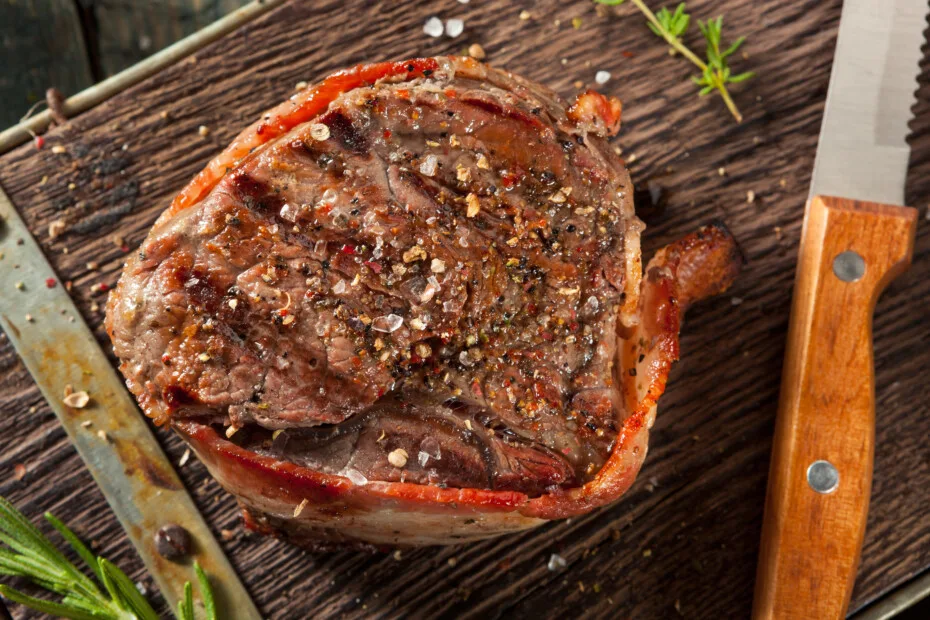
Location: The sirloin is sliced from the rear of the animal near the short loin.
Corresponding Subprimal Cuts Of Beef: Sirloin is derived from the French word “surlonge,” which translates to sur for ‘above’ and longe for ‘loin.’ sirloin is a sub-primal cut of beef.
Fat Content: Sirloin is a leaner cut of beef, with hardly any marbling compared to other cuts such as a ribeye, tomahawk, or porterhouse steaks. However, it is not as dry or tough as other lean cuts of meat.
What Does Sirloin Look Like? Sirloin has a pin bone that is the first cut from the meat and then broken down further. Additionally, sirloin has a strip of fat covering the top portion.
Sirloin steaks resemble a T-bone or porterhouse steaks since they have the signature T-bone and have both the eye and tenderloin muscles.
How Long Does Sirloin Take To Cook? Sirloin steaks typically cooks in 4-5 minutes for a medium-rare steak. On the other hand, sirloin roasts take about 1-2 hours.
Best Cooking Methods: The best cooking method for sirloin steak is using dry heat. Dry heat methods include roasting, pan-searing, grilling, or broiling.
Ideal Dishes: Sirloin is the perfect cut of meat for dishes such as roasted sirloin or pan-seared sirloin steak with garlic herb butter.
Cost Of Sirloin: Sirloin steaks tend to be more expensive than chuck or shanks. Sirloin represents 8% of the beef carcass.
It is high on the carcass, which means the muscle is not used as much as the legs or tail. These muscles are barely worked, creating a tender cut of beef.
Regular sirloin ranges between $5.99-$7.99 a pound, while dry-aged sirloin steaks are $8.99 per 8 oz steak.
Best Substitutes For Sirloin: Top round, chuck, ribeye, flank, and New York strip steaks have a flavor that closely resembles sirloin.
Wine Pairings: Cabernets are perfect for sirloin. Zinfandel also complements sirloin and is perfect if you prefer sweet wines.
You can also opt for a Malbec or Syrah (Shiraz) to pair with your sirloin dishes.
Top Sirloin
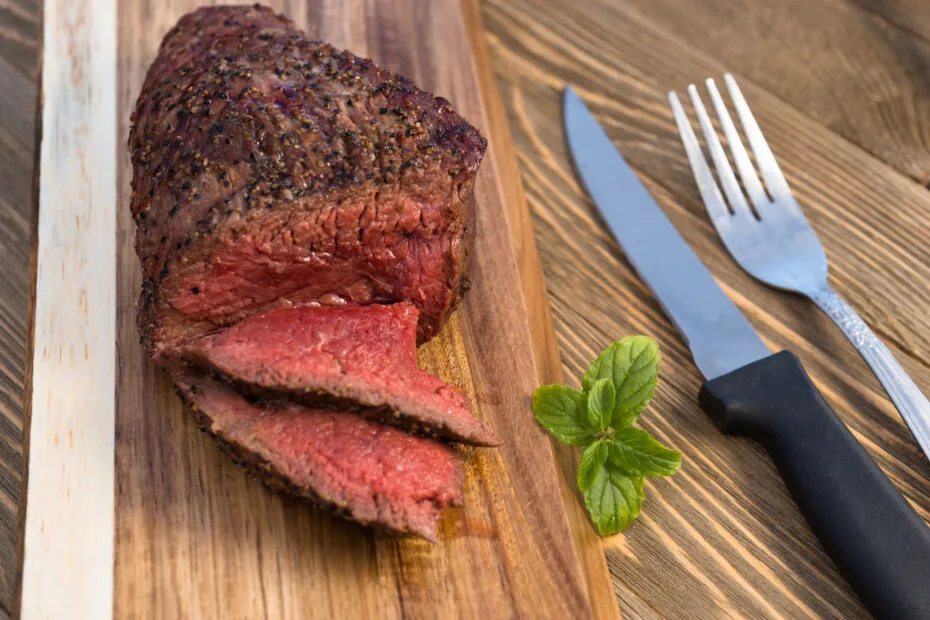
Location: Letter for letter top sirloin is located at the top of the sirloin portion of the carcass, henceforth the name.
Corresponding Subprimal Cuts Of Beef: Top sirloin is a sub-primal cut of beef.
Fat Content: Because of the top loins position on the animal, the meat has less marbling which makes it a super lean, tender, and chewy cut of beef.
What Does Top Sirloin Look Like? Its best to think of top sirloin steaks as a hybrid of a T-bone or porterhouse with the tenderloin region removed. Top sirloin can be bone-in or boneless.
How Long Does Top Sirloin Take To Cook? A top sirloin steak can be cooked in 6-8 minutes per side. However, it takes 4-5 minutes per side on the stovetop. A top sirloin roast cooks in 1-2 hours, and on the grill, a steak takes 10-12 minutes.
Best Cooking Methods: Unlike other lean cuts of meat, top sirloin has a sizeable thickness with robust beefy taste. It works well with sauces as well as marinades and is best cooked with dry heat.
Top sirloin is excellent for grilling, pan-searing/broiling, stir fries, and sous vide cooking.
Ideal Dishes: Sirloin steaks are perfect for beef and broccoli, a beef stir fry, beef kabobs, and a traditional pan-seared steak.
Cost Of Top Sirloin: Top sirloin is a hot commodity in the beef world. In fact, top sirloin steaks are usually on display behind the meat case.
Top sirloin steaks are about $8.99 per 8 oz. steak and sirloin roasts are $9.99-$10.99 per pound.
Best Substitutes For Top Sirloin: The best substitutes for top sirloin are top round, flank steak, or round tip steak.
Top round steak works particularly well for recipes using liquids and slow cooking techniques. Flank steak also works well with slow cookers or braising.
If you are substituting a round steak for a top sirloin steak and plan to grill it, marinate it before cooking.
Wine Pairings: Zinfandel is perfect for top sirloin because of its hints of spiciness that complement the bold flavor of sirloin.
Malbec pairs well with top sirloin due to its tannic content. Pinot Noir combines sweet flavors of black cherry, raspberry, vanilla caramel, and clove flavor that enhance the flavor of top sirloin steak.
Bottom Sirloin

Location: Bottom sirloin steak is sliced from the back of the carcass under the top sirloin and above the flank.
Corresponding Subprimal Cuts Of Beef: Bottom sirloin is a subprimal cut of meat containing three muscles with varying degrees of tenderness.
Bottom sirloin is cut into the tri-tip, petite sirloin or the ball tip, and the sirloin bavette or the flap.
Fat Content: Bottom sirloin contains approximately 11.2 grams of fat.
What Does Bottom Sirloin Look Like? Bottom sirloin is a bone-free cut with a triangular shape that is commonly referred to as tri-tip.
It weighs about 2 lbs and is very similar to its sibling top sirloin. However, bottom sirloins have their own unique flavor.
How Long Does Bottom Sirloin Take To Cook? Depending on the size of your bottom roast, it can take 1 1/2-3 hours to cook.
Best Cooking Methods: Although bottom sirloin is not best when grilled like a steak, bottom sirloin is perfect for roasting, stews, or bistro-style steaks, which are grilled or broiled whole and sliced into thin strips.
It is important to note that bistro-style bottom sirloin should be marinated using ingredients such as citrus or vinegar that are high in acidity.
These ingredients will tenderize the tri-tip or sirloin flap before cooking it and slicing it against the grain.
Ideal Dishes: Grilled tri-tip, stir-fries, beef stroganoff, roasted bottom sirloin are all delicious dishes that are perfect for any meal.
Cost Of Bottom Sirloin: Bottom sirloin usually costs less than top sirloin, giving you a better deal.
Because bottom sirloin is not as tender as top sirloin and is much larger, it is typically labeled in grocery stores as “sirloin steak.”
A tri-tip roast can cost $8.99-$9.99 per pound, while both petite sirloin and sirloin bavette cost about $7.99 per pound.
Best Substitutes For Bottom Sirloin: The best substitutes for bottom sirloin are bottom round roast, eye round roast or eye of round steak, top round steak, or a butterball steak.
Wine Pairings: Bottom sirloin pairs splendidly with red wines such as a California or Australian Cabernet Sauvignon.
A bottom sirloin roast will also pair perfectly well with robust reds such as red Bordeaux.
Beef stews are complemented by rich wines, such as a California Pinot Noir or Zinfandel or a Spanish Rioja.
Plate
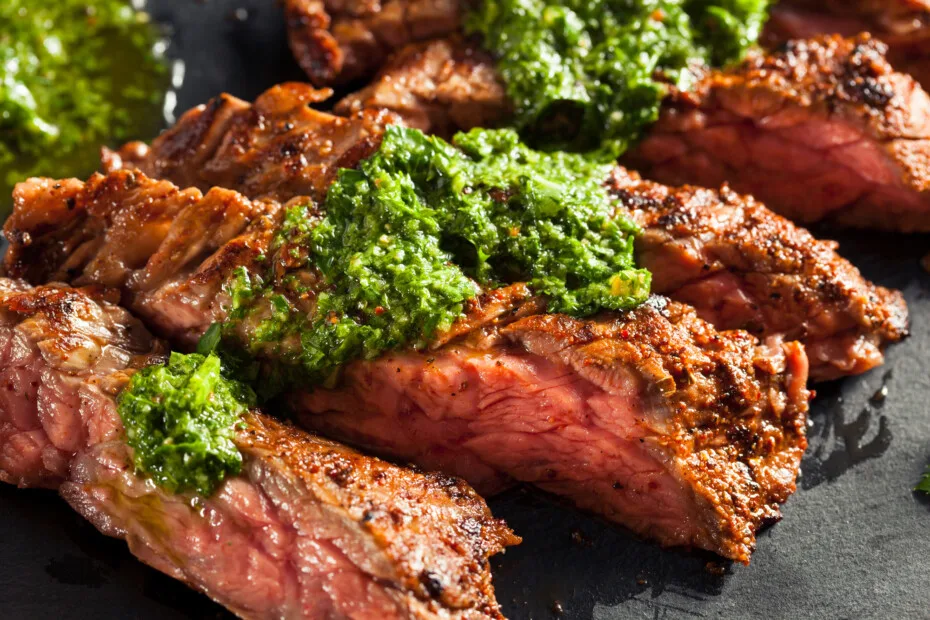
Location: The plate, more commonly known as short plate, is a forequarter cut located on the belly of the cow. However, the United Kingdom considers the plate to be a portion of the brisket.
Corresponding Subprimal Cuts Of Beef: Subprimal cuts of the plate are hanger steak, skirt steak, plate short ribs, and flanken-style short ribs.
Fat Content: The plate is considered a lean cut of meat. Hanger steak has 43 calories, with only 6 grams of them being fat. Skirt steak contains 12 grams of fat.
What Does Plate Look Like? Hanger steak is a thick cut of meat with a coarse texture laden with connective tissue.
Skirt steak is a thin, long cut with visible grain. There are two variations of skirt steak: inside and outside skirt steak.
Flanken-style short ribs are a thin cut across the bone, usually about 1/2-inch in thickness, with a couple of bones present in each piece of meat.
How Long Does Plate Take To Cook? On average, Beef plate short ribs take 2-6 hours depending on the cooking method, while flanken-style cooks in 2-4 hours.
Both hanger and skirt steaks can be grilled for 3 to 5 minutes per side until it reaches your desired temperature.
Best Cooking Methods: Both hanger and skirt steaks should be tenderized by removing the connective tissue or by marinating it.
It is best grilled or broiled over high heat. In contrast, plate short ribs are perfect braised or grilled.
However, if you do grill them, use a spice rub to enhance the flavor. Flanken-style short ribs, also known as Korean-style short ribs, are best when marinated and then grilled.
Ideal Dishes: Grilled skirt steak, beef fajitas, BBQ flanken-style ribs, Korean grilled flanken-style ribs, smoked beef plate short ribs, and grilled hanger steaks are all excellent meals for a weeknight dinner.
Cost Of Plate: Flanken-style short ribs typically weigh about .75–1.25 pounds and cost $12 a pound.
Short plate ribs cost about $6.99, and skirt steaks cost $11.89 per pound. Hanger steaks, on the other hand, are pretty expensive.
The online meat market can range from $13 to $24 per pound, but superior quality hanger steaks can cost up to $38 per pound.
Best Substitutes For Plate: Flap steaks, thinly sliced beef tenderloin, flank steak, and short loin steaks are the ideal substitute for skirt steak.
Chuck roast is the superior option for short plate or flanken-style short ribs. F
lank steak, beef tenderloin, and filet mignon are excellent replacements for hanger steak.
Wine Pairings: A Sonoma County Cabernet Sauvignon, Merlot, or Malbec pairs perfectly with hanger and skirt steaks.
At the same time, a California Zinfandel or rich Malbec works well with short plate and flanken-style short ribs.
Tenderloin
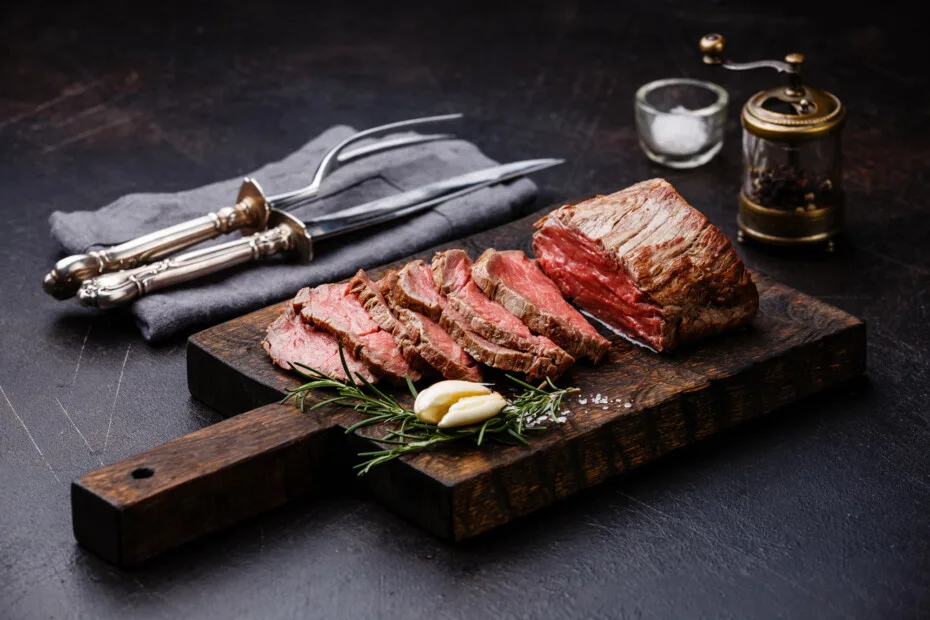
Location: The tenderloin is located directly underneath the ribs, right next to the backbone. With two ends: the butt and the tail, the tenderloin is a long, narrow portion of meat deemed to be the tenderest of all cuts of beef.
Corresponding Subprimal Cuts Of Beef: Subprimal cuts of tenderloin include the ever famousfilet mignon, tenderloin roast, the tips, tails, and butt.
Fat Content: Tenderloin, also known as the eye fillet, contains minuscule amounts of intramuscular fat, which means it is incredibly lean.
In fact, tenderloin contains 4.5 grams of saturated fat and 10 grams of total fat. For this reason, tenderloin is one of the most popular cuts of beef.
What Does Tenderloin Look Like? Tenderloins are shaped like a pencil, with a thick end frequently called the sirloin end at the rear and a sharp end headlong.
How Long Does Tenderloin Take To Cook? Tenderloin roasts that weigh 4 to 5 pounds should be cooked for 50-60 minutes for medium-rare and 1 hour to 1 hour 10 minutes for medium.
Grilled tenderloin steaks should be cooked for 8 minutes per side.
Best Cooking Methods: Roasting tenderloins is by far the best method for cooking tenderloins.Seasoning is essential for beef tenderloin to provide it with guaranteed flavor.
The tenderloins lean nature is not as flavorful on it it’s own. Optionally, you can sear it before roasting it uncovered at 425°F until it is your desired doneness. Additionally, dry heat quick cooking methods such as pan-searing or grilling are also suitable for tenderloin.
Ideal Dishes: Steak tartar, grilled steak, roasted beef tenderloins, bacon-wrapped fillet mignon, and so much more are the perfect dishes that showcase the flavor of the most tender cut of beef.
Cost Of Tenderloin: As you can imagine, the most tender part of the animal has to be the most expensive cut of meat.
Whether you pick your tenderloin up from a butcher shop or grocery store, you can expect to hand over at least $25-$30 per pound for a trimmed center-cut tenderloin.
Best Substitutes For Tenderloin: let’s be honest, nothing can compare to the most tender cut of beef, but a ribeye roast comes pretty close to it.
A ribeye roast is almost as tender as the tenderloin, but it does contain more fat.
Wine Pairings: The mellowed tannins in Bordeaux wine pair perfectly with beef tenderloin, making it optimal.
Wines such as Cabernet Sauvignon, Malbec, Merlot, Syrah, and Tempranillo are also a good fit for tenderloin.
Flank
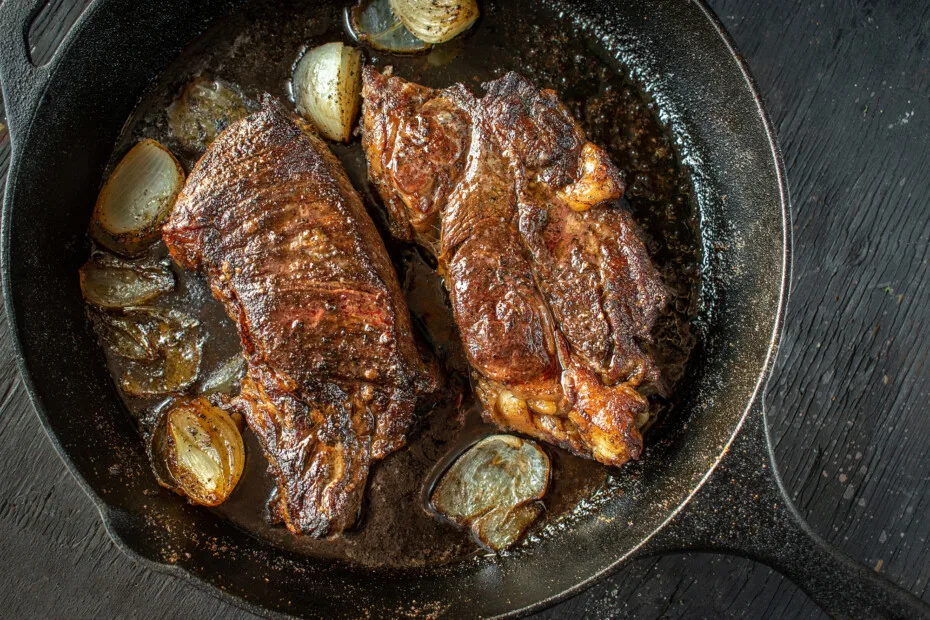
Location: The flank is located in the steer’s abdominal muscles or lower chest, positioned directly below the loin.
Corresponding Subprimal Cuts Of Beef: Known as bavette (bib)to the French, Brazilians asfraldinha (little diaper), and sobrebarriga (over the belly) to Columbians, the flank only has one subprimal cut: flank steak.
Fat Content: Interestingly enough, flank steak is technically not a steak since it is fabricated from the animal’s belly muscles.
It is a lean cut of beef containing minimal amounts of fat. However, it still packs a punch of flavor.
What Does Flank Look Like? Flank steak is approximately a foot long and one inch in thickness. It is typically cooked whole instead of carving the meat into individual steaks.
Flank steak is most noticeable because of the signature cross-grain direction that is easily picked up by the eyes.
How Long Does Flank Take To Cook? Depending on the cooking method, flank steak can cook in 3-5 minutes per side.
Best Cooking Methods: Flank steak is best prepared using high temperatures. Grilling is possibly the best method of preparing a flank steak.
However, you can also sear it in a scorching hot skillet or broil it in the oven.
The magic trick for cooking flank steak is limiting the cooking time and cooking the beef to rare, medium-rare, or medium.
Ideal Dishes: The perfect dishes for flank steak are pan-seared flank steak or grilled flank steak served alongsidea flavorful chimichurri sauce.
Cost Of Flank: Flank steak is ordinarily one of the least pricey cuts of beef on the market. Juxtaposed to skirt steaks, flank steaks cost a bit more because they are branded the fajita meat of the restaurant world.
However, most you should pay for a flank steak should be $11 per pound or less.
Best Substitutes For Flank: Skirt steak is like the cousin of flank steak. They can be used interchangeably. You can also use flat iron steak in place of flank steak.
Wine Pairings: When selecting wines for flank steak, stick to wines delicate, fruity red wines.
A medium-bodied Cabernet Franc, such as Cabernet Sauvignon, is perfect for flank steak.
Chuck

Location: Beef chuck is fabricated from the forequarter of the animal.
Corresponding Subprimal Cuts Of Beef: Chuck is further broken down into chuck tenders, chuck roll, shoulder clod, square-cut chuck, beef ribs, chuck steak, or the blade, which is sliced into a flat iron steak.
Chuck can also be used to produce turned into ground beef.
Fat Content: Although it is usually considered lean meat, the fat content of chuck can be hard to estimate. Parts such as the shoulder and neck tend to go unmeasured since they are manufactured into ground beef.
What Does Chuck Look Like? Whether it’s a steak or a roast, chuck can be quickly identified by its the shoulder bone that takes on the shape of the numeral 7.
Chuck stakes are usually cut into a rectangular shape that is 2.54 cm in thickness.
How Long Does Chuck Take To Cook? A 3-pound roast takes about an hour. But if your roast is larger than 3 pounds, factor 15 minutes per pound when estimating cooking times.
Additionally, remember the roast will continue to cook while it’s resting for 15-20 minutes.
Pull your roast out of the oven a few degrees below your desired temperature.
Best Cooking Methods: When it comes to chuck, braising is your best friend. Chuck is not the most tender part of the animal.
It’s very tough, which means it must be cooked in liquids in a slow cooker, oven, or stovetop at low temperatures for a substantial amount of time until its falls off the bone tender.
Chuck steaks can be quickly pan-seared, but it’s best that you do not cook it above medium.
Ideal Dishes: Chuck is the poster child for a pot roast, braised chuck roast, and stewed beef.
Cost Of Chuck: Even though the rib and loin portions of the cuts of steak chuck roast and steaks are very inexpensive. Most chuck roasts or steaks usually cost about $7 per pound.
Best Substitutes For Chuck: The best substitute for a cut of chuck is a top blade roast or bottom chuck roast.
Wine Pairings: Chuck requires a wine with a big and bold flavor that matches the beefy flavor of chuck.
Most red wines pair perfectly with pot roast. Cabernet Sauvignon, Merlot, Pinot Noir, and Zinfandel are excellent options for chuck.
However, earthy wines bursting with umami flavors such as Chardonnay, Pinot Noir, and Syrah pair perfectly with chuck.
Neck
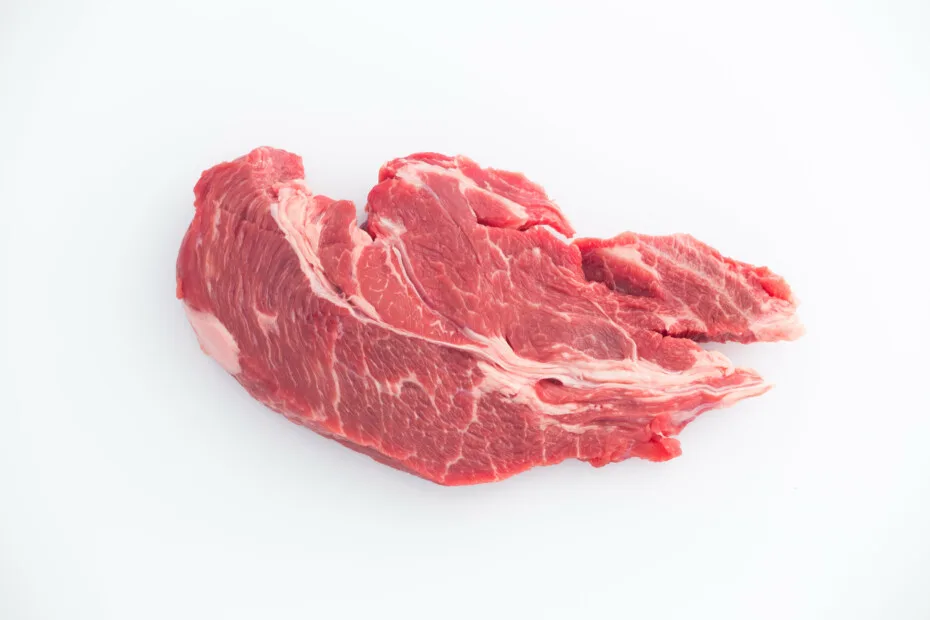
Location: As the name implies beef neck is a cut of beef removed from the neck portion of the animal.
Corresponding Subprimal Cuts Of Beef: The neck is the sub primal cut of meat belonging to the chuck primal cut.
Fat Content: As you can imagine, neck bones are usually flavorful and fatty because it comes from the neck. Neck bones fat content can range from 16-22%.
What Does The Neck Look Like? Neck bones are a longer, meatier version of its distant cousin, the oxtail.
However, it has fewer tendons and is less fatty than the oxtail.
How Long Does The Neck Take To Cook? Simmered on the stovetop, neck bones can take about 1 to 1½ hours to cook. Cooked in the oven, neck bones may take 1-3 hours to cook.
Best Cooking Methods: Neck bones are one of the toughest cuts of meat on the animal.
The only way to prepare this cut of meat is to braise it or stew it for a long time in a liquid such as wine or beef broth at a low temperature.
This is the only way neck bones can be transformed into a scrumptious tender meal.
Ideal Dishes: Braised beef neck bones are most beneficial when used to make dishes such as braised neck bones and mushrooms, slow cooker beef neck bones and gravy, or beef neck terrine.
Serve it alongside a bowl of mashed potatoes along with carrots, broccoli, or asparagus to make the meal complete.
Cost Of Neck: Beef neck bones are an undiscovered treasure. As the beef market has shown us time and time again, tough cuts are inexpensive.
Beef neck bones are one of the cheapest cuts you will find, making them the perfect meal for a weeknight dinner or a special occasion. Beef neckbones cost as little as $1.89-$2.45 per pound.
Best Substitutes For Neck: The closest substitute to beef neck bones is its distant relative oxtails. However, meat shanks, short ribs, and even a pot roast can be used in place of neck bones.
Wine Pairings: Neck bones pair exquisitely with red wines, and you can add a little red wine to your cooking liquid for added flavor.
Californian or Australian Shiraz, as well as a Bordeaux, Cabernet Sauvignon, or Merlot, will work well with any neck bone cooking method you choose.
Cheek

Location: The beef cheek is located in the facial muscles of the cow and is cut from the cheek muscles.
Corresponding Subprimal Cuts Of Beef: Like flank steak, the cheeks are not a steak. Therefore it is not a subprimal or a primal cut of beef.
Fat Content: Beef cheeks are unique. Most cuts of beef are either lean or fatty. However, the cheeks are the perfect combination. They are not lean or fatty. They are both.
What Does The Cheek Look Like? The cheeks are a sizable slab of meat that resembles a boneless steak with a moderate amount of intramuscular fibers running through it.
How Long Does The Cheek Take To Cook? Beef cheeks are one of those forgiving cuts of beef we all should be thankful for. There is no cooking time limit as you cannot overcook it.
Even though it will probably cook in 4-6 hours, you can forget about it and expect to find a tender cut of meat when you return.
Best Cooking Methods: During the entirety of a cow’s life, it uses its muscles continually to process food. Cheek muscles are one of the hardest working muscles in the animal’s body.
Additionally, it is the home to a healthy amount of connective tissue, also known as collagen. Because of this, the cheeks are a tough cut of meat that becomes tender when cooked the right way.
Beef cheeks should be seared in a pot then stewed, slow-cooked, or braised.
You can also brown your vegetables such as carrots, celery, onions and add herbs like garlic, woody thyme, or rosemary for extra flavor.
Wine and chicken or beef stock are great braising liquids for beef cheeks.
Ideal Dishes: Beef cheeks are perfect for dishes such as red wine braised beef cheeks, beef Cheek soup, and beef cheek tacos.
Cost Of Cheek: Beef cheeks are an inexpensive cut of beef. However, they are just as flavorful as any other cut of meat. Depending on your location, you can find them for less than $15 a pound.
Best Substitutes For Cheek: Any cut of beef that can be slow-cooked or braised can be used in place of beef cheeks. Chuck or short ribs cut into small pieces work perfectly in any beef cheek recipe.
Wine Pairings: Whether you are a fan of red or white wines, there is one out there that pairs perfectly with beef cheeks.
If you enjoy white wine with your beef dishes, you should opt for a German Riesling or Californian Chardonnay.
If you prefer a bottle of red wine, a Californian Pinot Noir is the best choice for beef cheeks.
Tongue
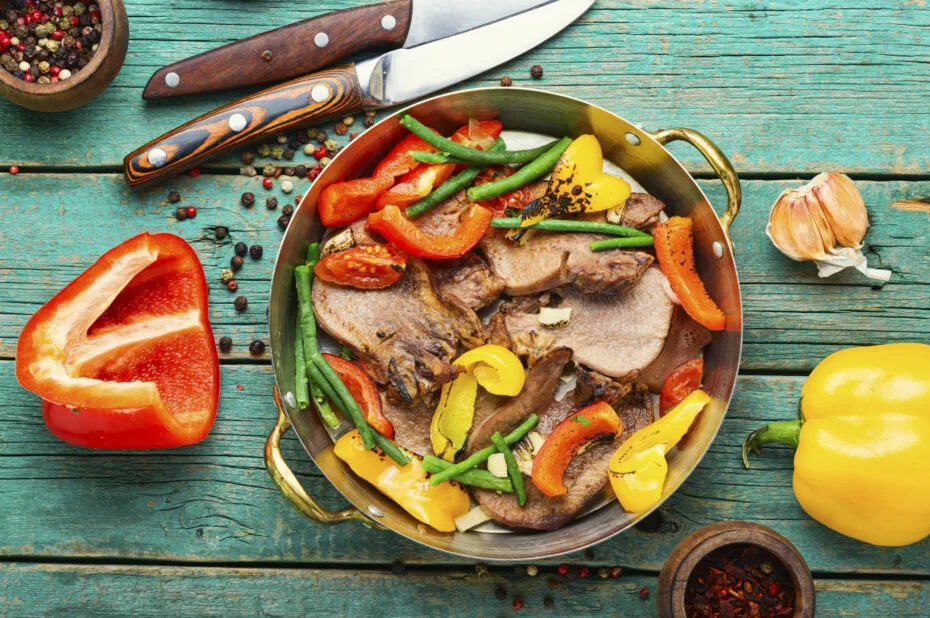
Location: As the name implies, the tongue is a portion of meat fabricated from the animal’s tongue.
Corresponding Subprimal Cuts Of Beef: Like flank steak and the cheek, the tongue is not a steak. Therefore it is not a subprimal or a primal cut of beef.
Fat Content: Unlike leaner cuts such as chuck, sirloin, or tenderloin, beef tongue has an incredibly high-fat content. In fact, fat makes up 72% of beef tongues’ caloric value.
What Does TheTongue Look Like? Raw beef tongue is a somewhat long organ with a curve that is covered in white skin. When cooked and sliced thinly, beef tongue has a fine texture that closely resembles deli meat like roast beef.
How Long Does The Tongue Take To Cook? The cooking time of beef tongue depends on the cooking method and whether the white skin has been removed.
Beef tongue can be cooked for 2-3 minutes once the white film has been removed. However, it can take up to 2 1/2-3 hours if the white skin has not been removed.
Best Cooking Methods: Understanding that most people seem to be intimidated by beef tongue because of its position on the animal or that it is a tough cut of meat, preparing it as easily as cheese.
Beef tongue can be seared, boiled, pickled, roasted, slow-cooked, or braised in sauce.
Ideal Dishes: Ideal dishes for beef tongue include boiled beef tongue, seared beef tongue, slow cooker Lengua (tongue), braised beef tongue, beef tongue tacos, pickled beef tongue, and beef tongue pot roast.
Cost Of Tongue: You would think that it would be very inexpensive with the limited amount of meat beef tongue has.
However, as more and more home chefs are being inspired to try different cuts of meat such as beef tongue, the demand increases and is reflected in the price.
Beef tongue has become so popular it has been deemed a delicacy in many national cuisines.
Beef tongue is used as a taco filling in Mexico and used as sandwich meat for open sandwiches, also known as canapés in the United States.
Depending on your location, one pack of beef tongue can cost $4.95 per pound.
Best Substitutes For Tongue: Although there are many cuts that can be substituted for beef tongue, beef shanks or beef cheeks are the best substitutes for beef tongue.
Wine Pairings: There are a variety of wines that pair perfectly with beef tongue, including Red Médoc, Red Hautes Côtes de Beaune, Red Marsannay, Red Beaujolais, Red Beaujolais Villages, and Red Morgon.
Final Thoughts
No longer do you need to stand in the meat aisle wondering what am I going to make for dinner? There is no need to feel overwhelmed about the amount of beef staring back at you.
You have learned all of the cuts of beef as well as their cooking times and cook method. Plus, you will be able to pick up the perfect bottle of wine to go with your delicious meal.
Wine always turns a delicious meal into an exquisite dinner. Happy shopping!

I have been smoking and grilling meat from an early age and enjoy sharing my knowledge and expertise through the hundreds of articles I have written about BBQ. I hope to make everyone’s BBQ journey that little bit easier.
